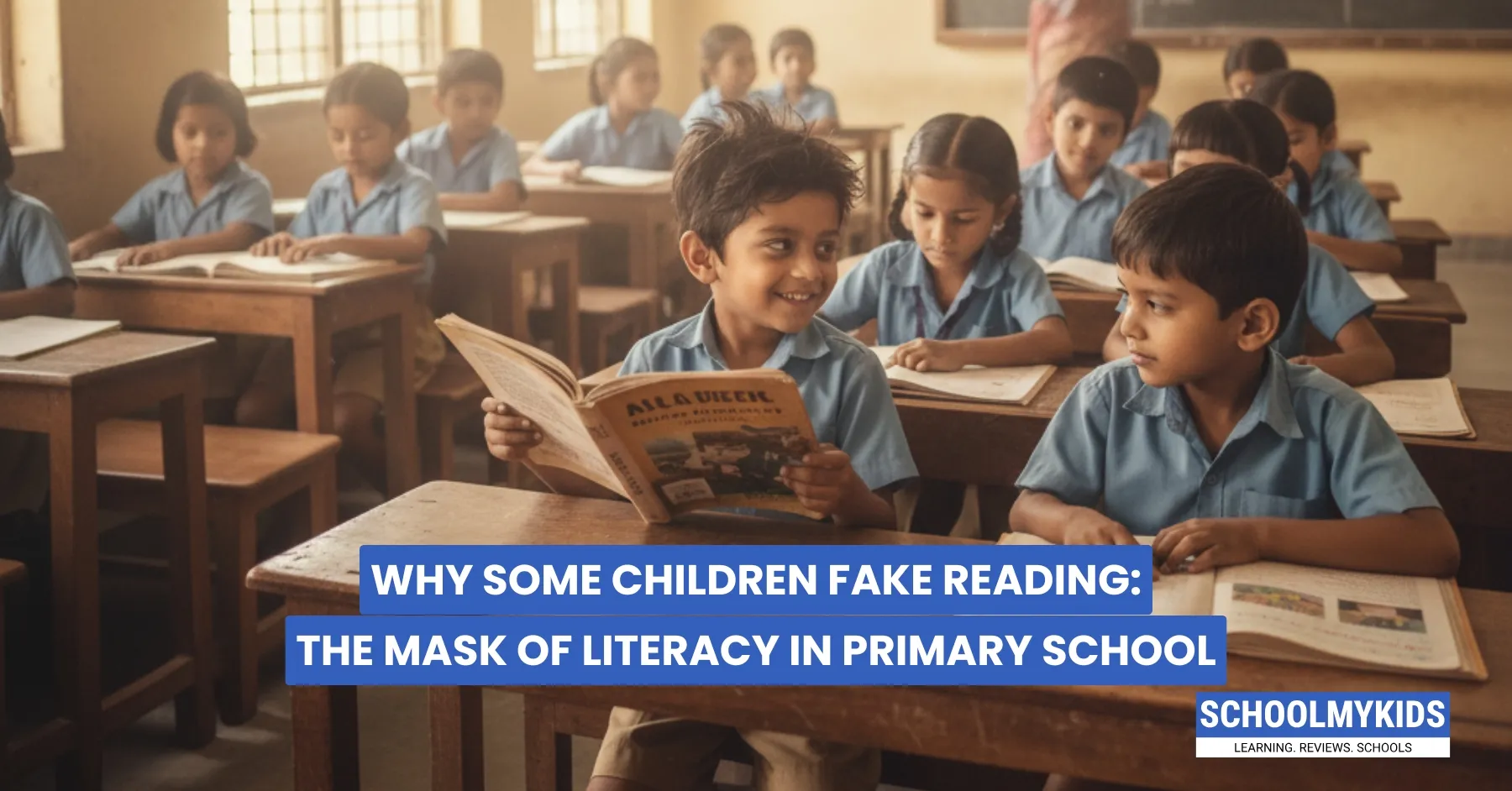Have you ever seen a child flipping through a book, eyes moving line to line, pretending to read, but you realize they’re not actually reading? They nod when asked about it, maybe even give a sentence or two as an answer, but deep down, you know they didn’t really understand a thing. This, believe it or not, is more common than most parents or teachers realize.
These days, especially in primary school, many children wear what can be called “the mask of literacy.” They know how to hold a book, they can identify a few sight words, and they’ve learned how to look confident while doing it. But the reading itself? It’s just an act.
The Face of “Fake Reading”
Let’s imagine an average 8-year-old in class 3. They see their classmates reading paragraphs aloud with ease. They, on the other hand, still struggle with new words. The pressure to “look smart,” score marks, or impress a teacher pushes them to act like they’re reading, even when they’re just guessing from pictures or remembering parts they heard before.
This fake reading often begins innocently, a way to keep up. But over time, it can quietly become a habit. The child learns to perform reading rather than do reading.
Why Do Children Fake Reading?
- Pressure to perform: Many schools emphasize “reading fluency” more than “reading understanding.” Children are told to read aloud in front of others before they are truly ready. When they falter and get laughed at or scolded, they learn to fake confidence instead of asking for help.
- Digital distractions: Kids today are surrounded by screens. Their patience for slow reading has naturally reduced. When reading feels slower or harder than watching a video, they tend to skip or pretend.
- Lack of personal attention: In a classroom with 30 or 40 students, it’s easy for a quiet child to slip under the radar. A teacher might think the child is reading well simply because the child is looking down at a page silently.
- Rote learning culture: Our education system often equates learning with memorizing. When exams reward recall more than understanding, reading meaningfully feels unnecessary to children.
- Confidence struggles: If a child has faced reading difficulties early on, especially around phonics or comprehension, pretending becomes a defense mechanism. It protects their self-esteem.
The Real Danger
The problem with fake reading is that it hides learning gaps for years. A child can reach middle school still unable to really read or understand grade-level text. This affects every subject, from science to social studies, and even their confidence in speaking or writing.
Worse, by the time parents discover it, the habit is deeply rooted. The child may think they do read well because nobody ever pointed out otherwise.
Spotting the Signs
How do you know if a child is faking reading? Here are a few clues:
- They turn pages too quickly.
- They can’t explain what happened in the story right after finishing a page.
- They give memorized answers instead of describing details.
- Their reading voice sounds flat or unsure.
- They avoid reading aloud whenever possible.
What Parents and Teachers Can Do
1. Make reading about meaning, not speed
When you read with your child, ask simple questions like “What do you think will happen next?” or “Why do you think the character felt that way?” This helps them move from word decoding to true understanding.
2. Read aloud to them, even at age 9 or 10
Many parents stop reading to their children too early. Listening to a fluent reader improves vocabulary, focus, and comprehension. Use storybooks, newspaper stories, or even comic panels; anything that keeps them curious.
3. Choose reading material that actually interests them
A 7-year-old who loves cricket will happily read a children’s magazine if it has sports facts in it. Reading improves faster when it taps into their interests.
4. Keep screens in balance
Don’t ban gadgets outright; instead, tie screen time to reading time. For example, 20 minutes of reading earns 15 minutes of a cartoon or game. This feels fair and balanced to kids.
5. Give time and space for slower readers
Not all children read at the same pace, and that’s okay. Praise effort more than perfection. Instead of saying, “You missed a word,” try “I like how you tried that tricky part again.”
6. Work with teachers, not against them
Parents and teachers should communicate. Ask teachers what level your child is reading at, and how you can support from home. Many schools run reading buddy systems or library periods that can help when guided right.
Conclusion
Fake reading is not laziness; it’s a quiet cry for help. Children don’t want to be left behind; they just fear being seen as “slow.” Real literacy can’t be forced or faked; it must be nurtured with patience, small victories, and continuous curiosity.
If our homes and classrooms can shift focus from reading to test well to reading to understand and imagine, the mask of fake reading will naturally fade.









Be the first one to comment on this story.